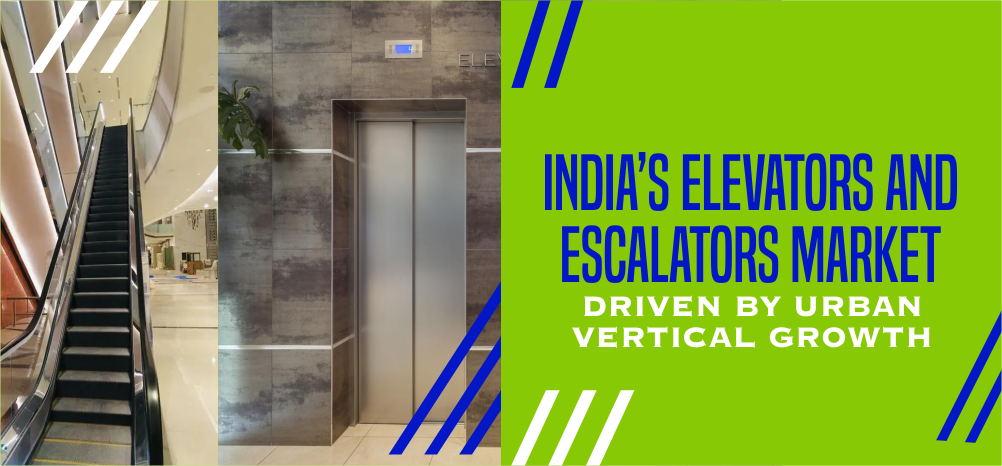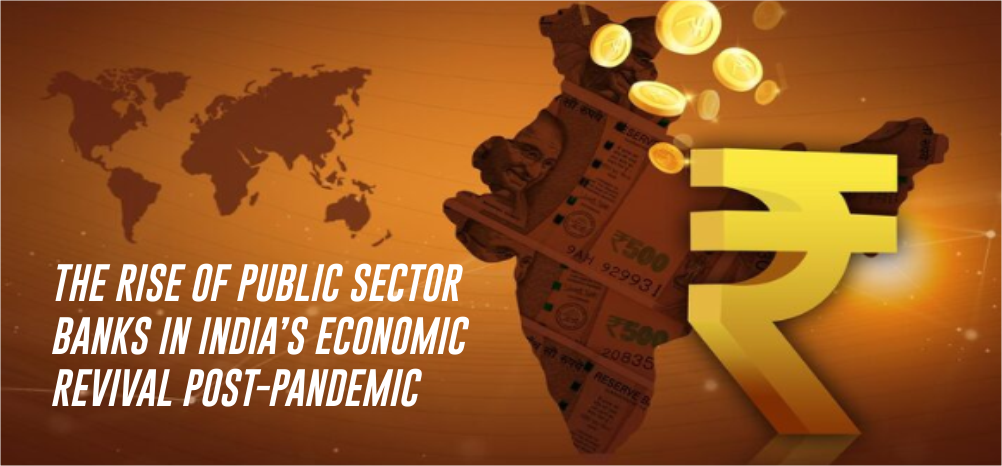India’s FMCG sector has expanded strongly, driven by consumer-led demand and rising product prices, particularly for essentials. The market stood at US$ 167 billion in 2023 and is projected to reach US$ 615 billion by 2027. GST rationalisation is expected to make daily essentials and FMCG products more affordable, boosting consumption while supporting the growth of e-commerce and quick-commerce channels. India’s internet users will surpass 900 million by 2025, with rural India accounting for 55% of users, and Indians collectively spent 1.1 lakh crore hours on smartphones in 2024, averaging five hours daily per person. These shifts are reshaping how consumers discover, purchase, and interact with FMCG brands.
Exports and domestic consumption are increasingly supported by new business models. India’s direct selling industry achieved sales of Rs. 22,142 crore (US$ 2.58 billion) in FY24, reflecting 4.4% YoY growth and a 7.15% CAGR over five years. Active direct sellers rose to 88 lakh, with women’s participation climbing to 44%. Meanwhile, India’s D2C market, valued at US$ 80 billion in 2024, is expected to exceed US$ 100 billion in 2025. Competition in this space is intensifying, FMCG product launches rose 1.8 times by May 2025, though only 4% crossed 1% market penetration. Leading companies have expanded portfolios through acquisitions: HUL acquired Minimalist, Marico added Beardo, Plix, Just Herbs, and True Elements, ITC took over Yoga Bar, and Emami gained full ownership of The Man Company.
Quick commerce has emerged as a game-changer, transforming the grocery segment. It now accounts for 70-75% of e-grocery orders, up from 35% in 2022, with growth at a 70-80% CAGR, making India the world’s first scaled quick-commerce market across 80 cities. FMCG companies reported a 50-100% jump in sales via this channel in FY25, supported by wider assortments, rising incomes, and consumer demand for convenience.
Performance momentum has been strong into FY26. In Q1 FY26, Dabur projected single-digit revenue growth, Nykaa’s beauty vertical saw mid-20% GMV growth, Trent expanded 20%, and Kalyan Jewellers rose 31%, aided by urban recovery and easing inflation. According to NielsenIQ, India’s FMCG market grew 13.9% in value and 6% in volume in Q1 FY26, with rural growth outpacing urban areas for the sixth straight quarter. Rural consumption has expanded sharply, with average basket sizes rising nearly 60% from 5.8 items in 2022 to 9.3 in 2024, signalling increased demand and evolving consumer preferences in semi-urban and rural India.
Advertising remains a key lever. FMCG companies were the largest spenders in India’s ad market, accounting for nearly one-third of expenditure with Rs. 31,000 crore (US$ 3.75 billion) in 2023. On digital platforms, FMCG brands contributed 42% of total spends, with digital advertising growing to Rs. 86,184 crore (US$ 9.92 billion) in 2023.
The sector’s growth is further anchored by the food processing industry, which reached Rs. 26,68,953 crore (US$ 307.2 billion) in 2022 and is projected to hit US$ 470 billion by 2028 at a 9.5% CAGR. From April 2000 to March 2025, food processing attracted Rs. 86,824 crore (US$ 13.13 billion) in FDI, supported by Ministry of Food Processing Industries (MoFPI) schemes. The Production Linked Incentive Scheme for Food Processing (PLISFPI), with a budget of Rs. 10,900 crore (US$ 1.3 billion), has approved 278 units, creating 3.4 lakh jobs, adding 35 lakh MT of capacity, and attracting Rs. 9,032 crore (US$ 1.04 billion) in investments. Sales generated under the scheme reached Rs. 3,80,000 crore (US$ 43.95 billion) till March 2025, with incentives of Rs. 1,727 crore disbursed. The scheme has also boosted farmer incomes through higher raw material procurement and strengthened India’s global brand presence by reimbursing up to 50% of overseas marketing and branding costs.
In September 2025, Amazon expanded its quick commerce service, Amazon Now, to Mumbai, offering groceries, essentials, and over 40,000 FMCG items with rapid delivery.
In August 2025, Reliance Industries announced plans to invest Rs. 40,000 crore (US$ 4.7 billion) over the next three years to build Asia’s largest integrated food parks with AI-driven automation, robotics, and sustainable technologies.
ITC Ltd. plans Rs. 20,000 crore (US$ 2.33 billion) investment over the next five to six years, focusing on FMCG growth, margin expansion, new product launches, horticulture, and AI-driven operations.
Reliance Consumer Products Limited plans to invest Rs. 8,000 crore (US$ 929.3 million) over the next 12-15 months from September 2025 to expand its beverage manufacturing capacity across 10-12 new plants nationwide.
In September 2025, Adani Wilmar acquired G.D. Foods (Tops ketchup brand) in a Rs. 603 crore (US$ 70 million) deal in stages, 80 % upfront and remaining 20 % over three years, to expand its value-added food portfolio, adding eight new categories including sauces, jams, pickles and instant mixes.
In August 2025, Reliance Consumer Products Limited (RCPL) acquired a majority stake in Naturedge Beverages (Shunya herbal-functional drinks), marking its entry into the fast-growing herbal and functional beverages segment.
In July 2025, Chaudhary Group and Bikaji Foods form a 50:50 joint venture to launch Indian snacks in Nepal, setting up local production and creating thousands of jobs in the FMCG market.
In May 2025, Rasna acquired the Jumpin ready-to-drink beverage brand from Hershey’s India, valued at approximately Rs. 350 crore, positioning itself to target Rs. 1,000 crore (US$ 116.2 million) in revenue over the next two years.
In April 2025, ITC Limited acquired 100% of Sresta Natural Bioproducts (maker of 24 Mantra Organic) in a Rs. 472.5 crore (US$ 54.9 million) deal to strengthen its organic food portfolio.
PepsiCo and Tata Consumer Products partner to launch fusion snacks combining Kurkure and Ching's Secret, targeting India’s ethnic snacks market with more than 20% annual growth.
In 2025, ITC and Prataap Snacks launched Korean chips, Pringles introduced fusion and desi masala variants, Unibic rolled out Snappers, and Marico’s Saffola added a Munchies range.
In 2025, Horlicks from Hindustan Unilever launched the Plus range for women, mothers, and men.
Reliance Consumer, which relaunched Campa in 2023, expanded in 2025 with 15-20 variants spanning cola, nectar, energy, and sports drinks, including regional flavours.
In summer 2025, AI drove 50% of new FMCG launches in India, influenced pricing in 60% of markets, boosted cold beverages and packaged foods by 80%, quick commerce presence by 30%, and Kombucha listings by 150% without discounts.
In 2024, Marico launched the Kaya Youth oxy-infusion range with an AI-based analyser to measure skin oxygen levels and recommend personalised routines.
In August, 2024, Emami Limited acquired full ownership of The Man Company for Rs. 177.63 crore (US$ 21 million).
In February 2024, Varun Beverages announced of investing Rs. 3,500 crore (US$ 421.69 million) to setup manufacturing plants, while generating 1,500 employment opportunities.
In June 2023, Skincare brand VLCC acquires men's grooming brand Ustraa.
In May 2023, Reliance Retail Ventures completes the acquisition of a controlling stake in Lotus Chocolate.
In January 2023, ITC announced plans to acquire 100% of Sproutlife Foods, a D2C startup and parent company of health food brand 'Yoga Bar' over a period of three to four years. In December 2022, Hindustan Unilever Limited announced its foray into the ‘Health & Wellbeing’ category through strategic investments in Zywie Ventures Private Limited (“OZiva”) and Nutritionalab Private Limited (“Wellbeing Nutrition”).
Entrepreneurs interested in setting up the food-related FMCG industry can set up their processing units in the government-designated agro-processing clusters, which help cut down the plant setup costs. With the advent of online retail and e-commerce, FMCG businesses can market and sell their products across the country without investing much in marketing activities.
Union Budget 2023-24 has allocated US$ 976 million for PLI schemes that aim to reduce import costs, improve the cost competitiveness of domestically produced goods, increase domestic capacity, and promote exports. Union budget 2023-24 focuses on reviving rural demand by boosting disposable income, allocation to farms and higher fund allocation on rural infrastructure, connectivity, and mobility to create long-term jobs.
The FMCG sector employs around three million people accounting for approximately 5% of the total factory employment in India. The key growth drivers for the sector include favourable Government initiatives & policies, a growing rural market and youth population, new branded products, and the growth of e-commerce platforms. In 2024, India’s consumer spending was Rs. 2,08,51,200 crore (US$ 2.4 trillion) and is expected to rise to Rs. 3,73,58,400 crore (US$ 4.3 trillion) by 2030. Indian villages, which contribute more than 35% to overall annual FMCG sales, are crucial for the overall revival of the sector. E-commerce now accounts for 17% of the overall FMCG consumption among evolved buyers, who are affluent and make average spending of about Rs. 5,620 (US$ 68).
The food and beverage sector is one of the essential components of the FMCG market, which accounts for about 3% of its GDP. In 2022, food and beverages accounted for 30% of total household spending in the country.
For 51% of Indians, spending on healthcare products increased in the 12 months to August 2021. The covid-19 pandemic has driven Indian consumers to focus their spending priorities on healthcare. Household FMCG spending rose 8% to Rs. 17,792 (US$ 2.07 billion) by April 2025 and is expected to hit Rs. 20,000 by year-end, driven by higher prices and growing consumption across staples and non-staples. Households in West Delhi spend the most on FMCG, averaging Rs. 39,325 (US$ 456) per year, more than double the national average. South Delhi records the highest purchase volumes at around 240 kg annually, Bengaluru leads in per kg spend at Rs. 211 (US$ 2.44), and Mumbai has the most frequent shopping trips at 233 per year.
In 2025, rural India overtook cities in affordable premium FMCG consumption with a 51% volume share and contributed 42% of super-premium sales, as average rural premium spend grew at 11% CAGR over five years, driving a Rs. 98,000 crore (US$ 11.38 billion) market. Dabur generates 45-50% of its revenue from rural India, reaching over 1,31,000 villages and 1.42 million outlets. Hindustan Unilever earns 35-40% of its revenue from rural areas and leverages its Shikhar app, used by 1.4 million retailers with a 70% monthly active user rate, to expand rural reach.
India’s e-commerce industry, valued at Rs. 10,82,875 crore (US$ 125 billion) in FY24, is projected to grow to Rs. 29,88,735 crore (US 345 billion) by FY30, reflecting a CAGR of 15%.
As per CRISIL, India's dairy industry is projected to experience a healthy revenue growth of 13-14% in FY25, driven by strong consumer demand and increased raw milk supply.
India’s healthy snack market, led by makhana, is projected at Rs. 20,000 crore (US$ 2.32 billion) by 2030, driven by functional, natural options, quick commerce, and premiumisation.
The market has grown exponentially over the past five years due to the surge in internet and smartphone users, improved policy reforms, and an increase in disposable income. Mobile wallets, Internet banking, and debit/credit cards have become popular among customers for making transactions on e-commerce platforms. India’s internet users will surpass 900 million by 2025, led by rural India (55% of users), with Indic language content. Indians collectively spent 1.1 lakh crore hours on smartphones in 2024, averaging five hours daily per person. The total value of digital transactions stood at US$ 300 billion in 2021 and is projected to reach US$ 1 trillion by 2026. The India online grocery market size has been projected to grow from US$ 4,540 million in 2022 to US$ 76,761.0 million by 2032, at a CAGR of 32.7% through 2032. India’s beauty and personal care market, presently valued at US$ 16.8 billion, is poised to grow at a compound annual rate of 11%, with cosmetics and perfumes categories growing at a faster clip.
India's economy continues to grow at the highest rate in the world, outpacing that of emerging and developing Asia and economic expectations for China. India’s GDP per Capita reached US$ 2,878 in 2025, compared with US$ 2,711 in 2024.
The outlook of the FMCG sector looks on track with the pandemic easing out. Rural consumption has increased, led by a combination of increasing income and higher aspiration levels. There is an increased demand for branded products in rural India. On the other hand, with the share of the unorganised market in the FMCG sector falling, the organised sector growth is expected to rise with an increased level of brand consciousness, augmented by the growth in modern retail.













